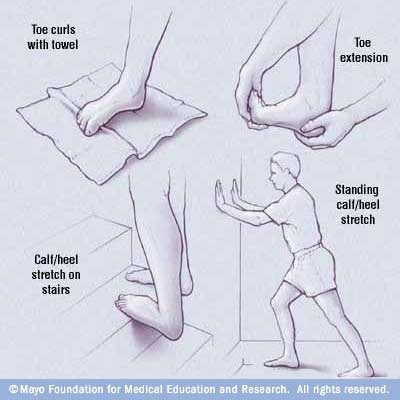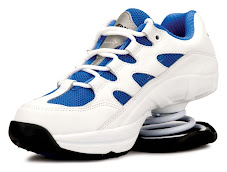 While there may be no single fountain of youth, you can slow down the aging process by staying physically active. Regular exercise enhances muscle and joint function, keeps bones strong, and decreases your risk of heart attack and stroke.
While there may be no single fountain of youth, you can slow down the aging process by staying physically active. Regular exercise enhances muscle and joint function, keeps bones strong, and decreases your risk of heart attack and stroke.
Here are some tips developed by the American Orthopaedic Society for Sports Medicine and American Academy of Orthopaedic Surgeons that can help you exercise safely.
Warm Up
Always take time to warm up and stretch before physical activity. Research studies have shown that cold muscles are more prone to injury. Warm up with jumping jacks, stationary cycling or running/walking in place for 3 to 5 minutes. Then slowly and gently stretch, holding each stretch for 30 seconds.
Be Consistent
Don’t succumb to the “weekend warrior” syndrome. Compressing your physical activity into two days sets you up for trouble and doesn’t increase your fitness level. Try to get at least 30 minutes of moderate physical activity every day. If you’re truly pressed for time, you can break it up into 10 minute chunks. Remember that moderate physical activity can include walking the dog, working in the gardening, playing with the kids and taking the stairs instead of an elevator.
Be Prepared
Take lessons and invest in good equipment. Whether you’re a beginner or have been playing a sport for a long time, lessons are a worthwhile investment. Proper form and instruction reduce the chance of developing an “overuse” injury like tendonitis or stress fractures. Lessons at varying levels of play for many sports are offered by local park districts and athletic clubs. Select the proper shoes for your sport and use them only for that sport. When the treads start to look worn or the shoes are no longer as supportive, it is time to replace them.
Listen to Your Body
As you age, you may find that you are not as flexible as you once were or that you cannot tolerate the same types of activities that you did years ago. While no one is happy about getting older, you will be able to prevent injury by modifying your activity to accommodate your body’s needs.
Balanced Fitness
Develop a balanced fitness program that incorporates cardiovascular exercise, strength training, and flexibility. In addition to providing a total body workout, a balanced program will keep you from getting bored and lessen your chances of injury.
Add activities and new exercises cautiously. No matter if you’ve been sedentary or are in good physical shape, do not try to take on too many activities at one time. It is best to add no more than one or two new activities per workout.
If you have or have had a sports or orthopaedic injury like tendonitis, arthritis, stress fracture or low back pain, consult an orthopaedic surgeon who can help design a fitness routine to promote wellness and minimize the chance of injury.






 If they keep wearing high heels, they may end up using the
If they keep wearing high heels, they may end up using the 

